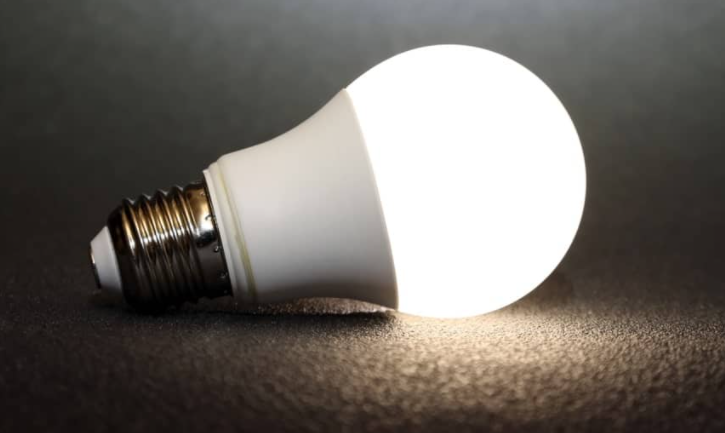In 1879, Edison, a famous American scientist, invented the incandescent lamp, ending the history of human "darkness". When people cheer and celebrate this great invention, visionary scientists have seen the obvious shortcomings of incandescent lamps: they only use 10% – 20% of electric energy, and the remaining 80% – 90% of electric energy is wasted in the form of heat loss.

"Incandescent lamps are heated by electric current to convert heat energy into light energy. This form of utilization of electric energy is too wasteful. Can you open up a new way to use electric energy?" Some scientists have put forward new ideas.
Hewitt of the United States is one of the scientists who hold this idea. He plunged into the experiment in silence. He made the heat-resistant glass into a lamp tube and drew out the air in the lamp tube. Then fill the lamp tube with various metals and gases and compare them repeatedly.
In 1902, Hewitt invented the mercury lamp. This mercury lamp is filled with mercury and a small amount of argon in the vacuum tube. After being electrified, mercury evaporates and emits light when excited by electrons. A Mercury lamp is much brighter than an incandescent lamp, the light is similar to sunlight, and the energy utilization rate is also high.
However, mercury lamps will radiate a lot of ultraviolet rays, which are harmful to the human body; the mercury lamp light is too bright and too dazzling, so it can not be widely used.
How to improve the mercury lamp be to make it more practical?
For a time, many scientists devoted themselves to the study of mercury lamps. They believed that they would succeed in the end if they followed the idea of the mercury lamp.
Many scientists have noticed that as early as 1852, British physicist Stokes discovered a fluorescent substance that can produce another kind of light when it encounters light, and the wavelength of the light converted by this fluorescent substance is much longer than the wavelength of foreign light.
"Since the wavelength of ultraviolet light is shorter than that of visible light, you can certainly get much longer visible light than ultraviolet light by irradiating fluorescent materials with ultraviolet light!" Scientists immediately thought of the drawbacks of mercury lamps.
This is very valuable speculation. It means that a lot of harmful ultraviolet light will become visible light. Specifically, as long as fluorescent materials are coated on the inner wall of the mercury lamp, when the ultraviolet radiation of the mercury lamp shines on the fluorescent materials, it will be excited to become visible light.
With such clear theoretical guidance, it is reasonable to say that the improvement of mercury lamp should have a leap.
However, scientists have failed repeatedly in the actual operation process. Why is this?
After careful analysis and discussion, scientists determined that the original speculation was correct, and the key problem was that the technology was not up to standard, that is, the starting device of the mercury lamp was not ideal. But it is not easy to make an ideal starting device!
The improvement of mercury lamps has entered a difficult stage.
In 19l0, French scientists noticed an experiment made by Moore in 1895. In this experiment, Mohr filled a small amount of carbon dioxide into the glass lamp that was pumped out of air and then gave it a high voltage to discharge, resulting in white light from the lamp. According to Mohr's experiment, Croat filled neon, argon, helium, and other inert gases into the glass lamp tube with air removed. He found that when neon gas was filled, the lamp would emit red and orange light; When the mixture of neon and argon is filled, the lamp will emit blue light; When the mixture of neon and mercury is filled, the lamp will emit green light; Filled with helium, the lamp will emit golden light. If different fluorescent substances are coated on the inner wall of the tube, the color of the light will be richer. "What a wonderful phenomenon!" Kraut was pleasantly surprised.
According to the special performance of this light, Croat made a publicity advertisement: red flowers, green leaves, and yellow text. He hung the advertisement in downtown Paris, France. At night, this advertisement emits colorful lights, which are very eye-catching.
Kraut obtained the invention patent for neon light and established "Kraut Neon Light Company", which made a fortune. It was not until 1932 that Croat's patent expired that neon lights were widely produced all over the world.
Although the neon light is not bright enough to be used for lighting and can only be used for advertising with its rich light colors, it once again proves that it is completely feasible to adopt a more economical way to use electric energy instead of Edison's method of turning electricity into heat and heat into light. In other words, the further development and improvement of mercury lamps are promising. This gives scientists great confidence.
Like other scientists, Yiman, a researcher of General Electronics, saw a bright future in the bright light of neon lights. He quickened the pace of development. Finally, in 1938, we broke through the design and production of the starting device and made a fluorescent lamp with a performance completely different from that of the mercury lamp.
This fluorescent lamp is filled with a certain amount of mercury in a glass tube. The inner wall of the tube is coated with fluorescent powder, and both ends of the tube are equipped with a filament as electrodes. Its working principle is: after electricity is turned on, mercury vapor discharges, and at the same time produces ultraviolet light, which excites fluorescent materials on the inner wall of the tube and emits visible light. Obviously, fluorescent lamps do not have the disadvantages of mercury lamps. They are brighter than incandescent lamps and have high power utilization and power saving. Therefore, once it was born, it soon entered the general family.
